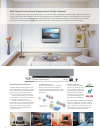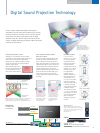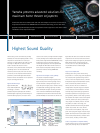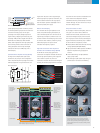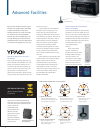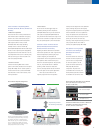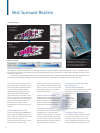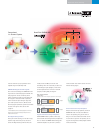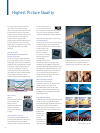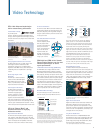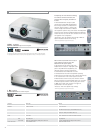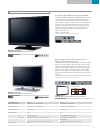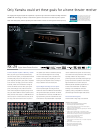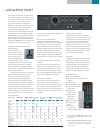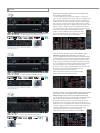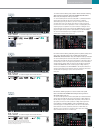
As one of the first companies to popularize
“home theater” and a leader in the field,
Yamaha is naturally committed to visual as well
as audio excellence. We want our customers’
enjoyment of movies and other video sources to
be totally satisfying. Our home theater line
includes a number of high performance
products, including projectors, DVD players and
a plasma monitor, but in terms of our home
theater receivers, we design them to deliver the
finest possible video signal to the display
component.
Video Up Conversion
(RX-Z9, RX-V2500, RX-V1500, RX-V757,
RX-V657 and RX-V557)
One way of ensuring the highest video quality
for your home theater system is to use the best
possible video signal. The receiver automatically
upgrades the input signal (composite to S-Video
or component, S-Video to component) to the
one that your monitor/TV can accept. This
means that you simply use the best possible
cable between the receiver and the monitor/TV,
and then whatever the source is, you are
assured of getting the highest possible quality.
DCDi Processing
(RX-Z9)
The RX-Z9 is the first receiver
to offer Faroudja’s DCDi
Processing, which is
selectable and ensures that
images are smooth and
natural, without staircasing
or jaggies.
Noise Shaped Video™ (RX-Z9)
This technology, from Analog Devices, uses
oversampling and advanced techniques such as
multi-bit sigma-delta processing and bit-
shuffling to improve converter performance by
Highest Picture Quality
moving converter noise to an
area of the spectrum where it
can be removed by an analog filter. This improves
the accuracy of signal representation, allowing
images to be displayed at much higher resolutions.
Progressive Scan Video Output and Other Video
Technologies (RX-Z9)
The RX-Z9 is the first receiver to provide Progressive
Scan Video Output, for use with high definition
monitors. With almost twice as much video data, it
provides a sharper, noise-
free picture with clearer
details. The progressive
circuit is an 3:2 Pull-Down
Detection type, and gives
you the benefit of
progressive scanning even if
your DVD player does not have it. Other video
technologies include 216MHz/12-bit Video D/A
Conversion, Motion Adaptive Noise Reduction, Cross
Color Suppression, Aspect Ratio Conversion, a Time
Base Corrector that prevents the wavy distortion
seen in video tapes and TrueLife Enhancer by
Faroudja that brings out details in the picture
producing a more lifelike image.
HDTV (720p/1080i) Compatible
Component Video Monitor Out
The frequency response of the component video
monitor out signal is an extremely wide
5Hz–100MHz (RX-Z9; RX-V2500, RX-V1500,
RX-V757, RX-V657, RX-V557 and RX-V457 are
5Hz–60MHz), ensuring compatibility with HDTV
(720p, 1080i) monitors.
Image Adjustment (RX-Z9)
To ensure that the high quality image looks precisely
the way you want it to, the RX-Z9 includes an
extremely detailed Image Adjustment function. You
can select three modes, Cinema, Standard or
Dynamic, and within those modes, you can “fine-
tune” five parameters: Enhancer, 3D NR, Contrast,
Brightness and
Saturation. You
can then store
your final
adjustments in the
user memory for
recall at any time.
Before TrueLife Enhancer (Left) vs. After TrueLife Enhancer (Right)
DCDi Off (Left) vs. DCDi On (Right)
Time Base Corrector Off (Left) vs. Time Base Corrector On (Right)
Without Film Mode (Left) vs. With Film Mode (Right)
Digital Video Processing Board
All digital video processing circuitry is on a single
board, housed in its own separate chamber to
completely avoid interference from other circuitry.
Digital Video Up and Down Conversion (RX-Z9)
Faroudja DCDi
processing LSI (FLI 2310)
Above images are simulated.
YGV-619 video processor LSI
(Yamaha original)
Component
Video
S-Video
S1/S2 compatible
Composite
Video
Component
Video
S-Video
Composite
Video
20



